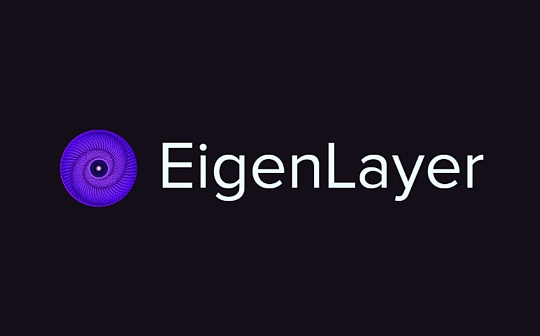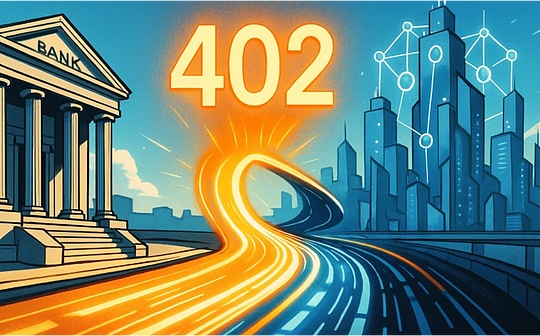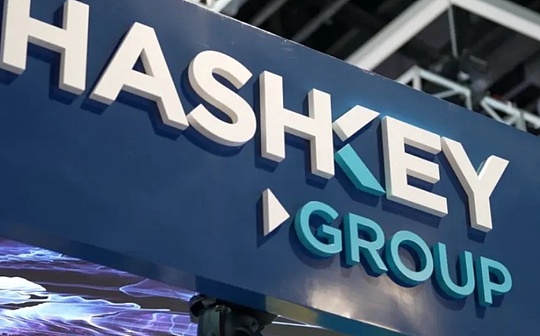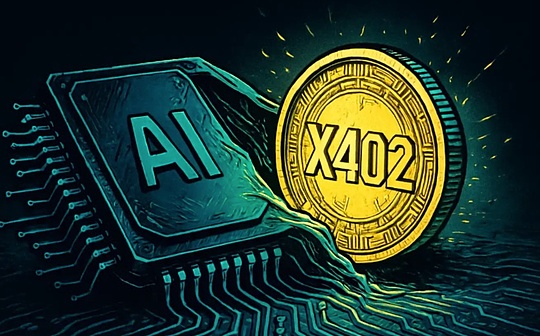
Author: JK, Coinbase Ventures Investor; Translation: Bit Chain Vision Xiaozou
Abstract:
-
Eigenlayer is an agreement based on Ethereum. It introduces the RESTAKING re -pledge mechanism -a new priority of encrypted economic security, which has become the main narrative of the Ethereum community.
-
Re -pledges through Eigenlayer can use Ethereum to use Ethereum’s existing economic security infrastructure (that is, authentication set and pledge ETH) to guide new active verification services (AVS).
-
Just like the traditional cloud platform and the SaaS solution completely changed the development of Web2, we believe that the appearance of Eigenlayer and its booming AVS ecosystem opened a “verifiable cloud” paradigm for Web3.
-
With the further development of re -pledge and sharing security models, and being driven by the growing needs of pledges and developers who are seeking to open the chain, their impact on the blockchain ecosystem will become more and more obvious.
1As well asEigenlayerWhat is it?
Eigenlayer is an agreement based on Ethereum. It introduces the re -pledge mechanism. The pledge is a new primitive in encrypted economic security.In essence, EIGENLAYER consists of a series of smart contracts, allowing users to choose “pledged” their pledged ETH or liquidity pledged tokens (LST) to guide new rights (POS) networks and services in the Ethereum ecosystem, Get additional pledge income/return.
Eigenlayer’s core goal is to start a new era of innovation and free market governance by reducing developers to start and guide the complexity of these networks from scratch.This is achieved by using Ethereum’s existing trust guarantees and economic security infrastructure.
Eigenlayer was released in 2023, allowing users to pledge their pledged ETH or LST.As of May 14, 2024, more than 4.9 million ETH (worth about $ 15 billion) had been pledged into the EIGENLAYER agreement again.

2Why is it important?
Ethereum network adopts the consensus mechanism of the equity proof (POS). Under this mechanism, node operators pledge their ETH pledge and operate verified by authentication software to ensure network security (that is, store data, process transactions, add new blocks to the letter chain, etc.), Early awarded reward (that is, a certain share of network costs).If node operators fail to perform their verification function or improper behavior, they may lose their pledged ETH (that is, no penalty).
At present, developers who seek to build an agreement that requires external operators on Ethereum usually need to guide their POS network and ensure network security.This is a difficult task that requires the design/release tokens of developers to motivate node operators to pledge tokens and operate authenticants software, and to implement fair reward distribution and penalties.In addition, the new agreement is required to start its own POS network to destroy the security of Ethereum and learn the value from the letter chain (in the form of pledged token).
3As well asEigenlayerOperating mechanism
EIGENLAYER tries to solve the above challenges, allowing developers to use Ethereum’s existing authentica sets, and through a “shared security” method, ETH pledge has been carried out from the first day.The sharing security and re -pledge mechanism not only promise to reduce the entry threshold of developers, but also promote the rapid innovation in the Ethereum ecosystem, but also aims to actively participate in the need for Ethereum pledgesThe way, so as to maximize the potential of return.
The EIGENLAYER protocol architecture includes four key components: RESTAKER, Operator (operator), AVS (active verification service) and AVS consumers.
-
Celebrate:Refers to personal or entities that pledge your pledge ETH or LST, the goal is to expand the security of services in the EIGENLAYER ecosystem, that is, active verification services (AVS).
-
Operator:That is, the entity that runs special node software, in order to perform verification tasks built on Eigenlayer to earn rewards for scheduled.The operator is registered in Eigenlayer, entrusted by the re -pledker, and then chose to provide verification services for various AVS.It should be noted that operators must abide by the penalties of each AVS.
-
Active verification service (AVS):Refers to a system that requires a unique distributed verification method to verify.AVS can have a variety of forms, including data availability layers, shared sorters, Oracle networks, Bridge, collaborators, application encryption systems, and so on.
-
Avs consumers:Using EigenLayer’s end users or applications.
4As well asCryptoof“Verifying cloud“
Eigenlayer founder Sreram Kannan’s often quoted is “Eigenlayer is a verifying cloud for Crypto”, but what does this sentence mean?In the traditional cloud architecture, central entities provide computing, storage and custody services for various Web2 SaaS solutions.These SaaS solutions are usually divided into two categories: horizontal SaaS (that is, general software solutions, usually for end users, instead of considering its industry factors) and vertical SaaS (that is, for specific user groups, use cases or industries)Standard software solution).
Compared with the changing personality of Web2 development with the cloud platform and the SaaS solution, we believe that the appearance of Eigenlayer and AVS provides a similar paradigm for the blockchain ecosystem.EIGENLAYER aims to provide AVS with encrypted economic security services (such as “Web3 SaaS”).Similar to the emergence and extensive adoption of the Web2 SaaS solution. Driven by the growth of protocols and DAPP demand, we see that AVS also shows a similar trend.
In short, Eigenlayer’s “shared security system” aims to promote fast chain innovation. At the same time, it provides higher decentralization, trust, and transparency, thereby redefining the future of “verifying cloud” computing.
5As well asEigenlayer avsstatus quo
On April 9, 2024, EIGENLAYER launched Operator and AVS modules on the main network. It is now a vibrant operator ecological home (as of May 14, 2024, the number of operators has exceeded 200). It is expectedMore and more AVS (currently 11) will be launched.We hope that it is like a traditional SaaS pattern. AVS can naturally form different categories (for example, horizontal AVS and vertical AVS).

Considering the above -mentioned framework, we see that the status quo of Eigenlayer AVS is as follows:
“level“AVS
-
Developer service:Helping developers to build and deploy POS networks (for example, AVS, L1S/L2S, etc.) frameworks and tools. These networks need to share security infrastructure (for example, Othentic, Blockless, ETHOS).
-
Operator service:Helping AVS operators to manage its node infrastructure, verification task and/or pledge operation (such as Supermeta).
-
Payment service:Management services to dealers and operators (such as Anzen) pay (such as AVS rewards) services.
“vertical“AVS
-
RollupServices: Support the development of Ethereum expansion basic services (such as Rollup), while inheriting the security of Ethereum trust the network.For example: data availability (such as EIGENDA, Nearda), shared sorting (such as Espresso, Radius), RaaS (such as Caldera, Altlayer), or interoperability (such as Omni, Polymer, Hyperlane, PolyHedra).
-
Decentralization network:The network of distributed verification mechanism is required.For example, Oracle (such as Eoracle), certification verification (such as Aligned Layer), DEPIN (such as Witnesschain, OpenLayer), Security Monitoring (such as Drosera) or smart contract strategy engines (such as AETHOS).
-
Coordinator:Provide developers with cost -effective services with computing capabilities under the verification chain.For example, database associate processors (such as OpenDB), ZK collaborators (such as Lagrange, Brevis, Space and Time), trusted execution environment and encrypted association processors (such as Automata, FAIRBLOCK) or AI reasoning (such as Ritual).
-
Application encryption:For services for the creation of a reliable encryption system.For example, omnidirectional encryption (such as FHENIX), multi -party calculations (such as Silence Laboratories) or threshold encryption (such as Mishti Network).
-
MEV management:Allows block proposals to add additional trustworthy promises to the block containing and sorting.
Application layer
-
On the AVS, we expect a new app on the chain on the chain of the unique economic security attributes of Eigenlayer.
-
New examples include ROLLUP, Lleric Reinstation Type (LRT), and related LRTFI APPs (even using LRT as DEFI protocols for the underlying source of the mortgage), social and game applications, decentralized physical infrastructure networks (that is, DEPIN), andIdentity/privacy protection application.
6, Future Outlook
With the further development of re -pledge and sharing security models, their impact on the blockchain ecosystem has become more and more obvious.The demand for developers who seek maximized income potential and the demand for developers who are innovative at the level of infrastructure are growing. It is expected to unlock new chain opportunities.In addition, although Eigenlayer took the lead in issuing a re -pledge agreement, we saw that other ecosystems also had similar mechanisms, such as Babylon Chain of Bitcoin, Solaana’s Solayer, Cambrian and Fragmetric, IBC’s Picasso Network, and Omnichain pledged (such as Exoc os) And multi -asset re -pledge (such as Karak).
In other words, although there are many exciting opportunities on the chain, although the re -pledged and shared security model has opened on the chain, the pledged person needs to understand the risk of smart contract security risks or accidental penalties.It should be noted that when writing this article, EIGENLAYER’s penalties and payment (that is, AVS Reward) mechanism has not yet been launched, and it is expected to be launched later this year.








